One of the most celebrated paintings by J.M.W. Turner depicts a ship that once played a role in a major battle in the early 19th century.
Joseph Mallord William Turner (1775-1851) was at the height of his career when he painted this masterpiece. It’s one of the most fascinating of the 550 oil paintings in the Romantic style that the English artist left behind.
Let’s take a closer look at some of the most interesting facts about The Fighting Temeraire by J.M.W. Turner, a remarkable work of art for multiple reasons.
1. The painting was completed in the late 1830s
William Turner, the name of the artist commonly used during his lifetime, was the leading Romantic artist in Great Britain. His career started in the 1780s when he was still a child. He started drawing images of Margate, the seaside town in Kent where he lived at the time.
Despite being trained as an architect initially, he entered the Royal Academy of Art in London at the age of 14. His first major work to be displayed was “Fishermen at Sea” (1796), one of the numerous seascapes that he produced during his career.
The Fighting Temeraire was completed in 1838, over 4 decades after his first work was exhibited at the Royal Academy.
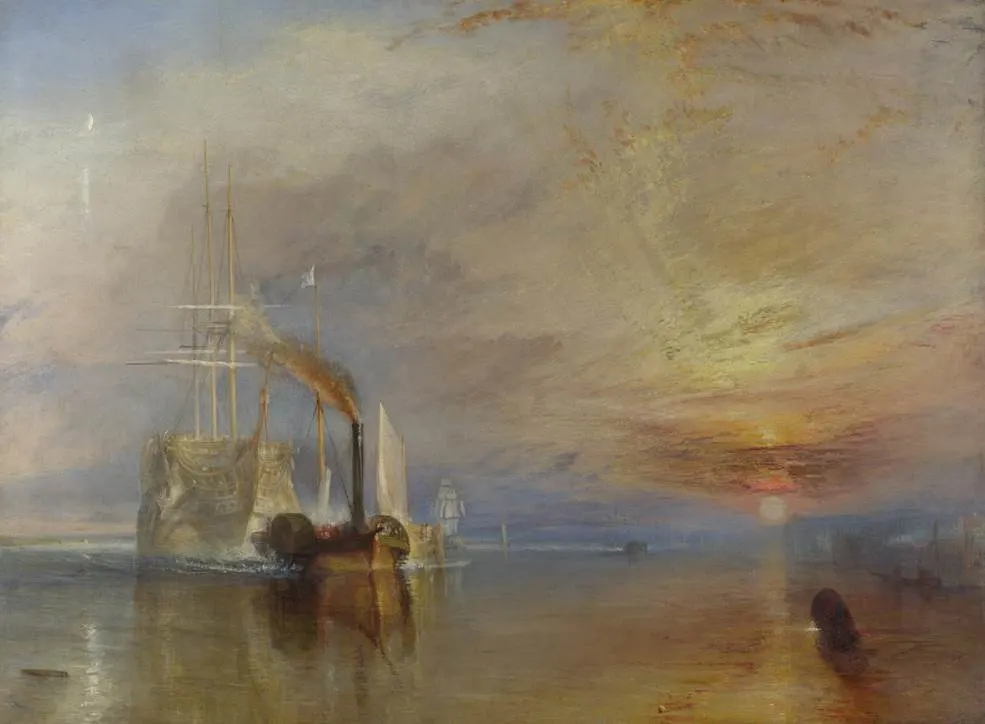
2. It depicts a second-rate ship that fought during the Napoleonic Wars
The full name of the painting exactly describes what is depicted: “The Fighting Temeraire, tugged to her last berth to be broken up, 1838.”
This means that the painting depicts the HMS Temeraire which is being towed up the River Thames in London paddle-wheel steam tug.
The ship was being towed from its berth at Sheerness Dockyard to its final destination at a wharf in Rotherhithe, a district in the southeast of London, where it was turned into scrap.

The HMS Temeraire was first launched in 1798 and only had one major accomplishment as it fought during the Napoleonic Wars at the Battle of Trafalgar. This event took place on October 21, 1805, and resulted in a victory of the Royal Navy over the Spanish and French.
This battle is especially memorable because it resulted in the death of Vice-Admiral Horatio Nelson, 1st Viscount Nelson, 1st Duke of Bronte (1758-1805), a man often simply referred to as Admiral Nelson.
Nelson’s Column at Trafalgar Square is just one of many monuments erected in his honor.

3. The composition of the painting is quite unusual
William Turner’s style often consisted of imaginative landscapes featuring expressive colors. This painting isn’t any different as it depicts a ship being towed to its final berth in a hazy view.
The composition, however, is quite unusual, because the main elements of the painting, the tugboat, and HMS Temeraire, are depicted in the bottom left corner.
The artist tried to emphasize the beauty of the old warship as he ensured it contrasted with the dark and dirty tugboat. The smoke from the tugboat only strengthens this feeling.
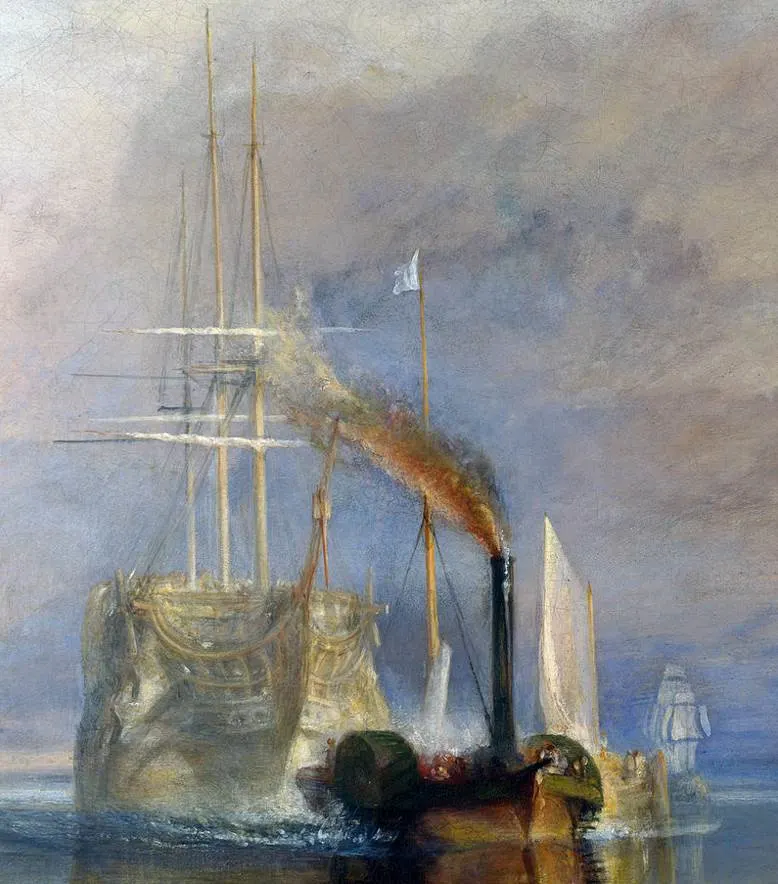
4. The painting isn’t an accurate depiction of the event
The crew of the HMS Temeraire referred to the ship as the “Saucy Temeraire” rather than the “Fighting Temeraire.” This is, however, not the only inaccurate fact about this painting.
The ship had been lying at Sheerness Dockyard at the mouth of the River Medway in Kent for quite some time and some work had already been done. The ship was missing its masts and rigging at the time.
Other liberties taken by the artist were:
- The ship was towed by two tugboats instead of just one. This allowed Turner to highlight the beauty of the old warship.
- The 98 cannons it had during the Battle of Trafalgar and all its other hardware were already removed as well.
- The two tugboats were going the ship in the other direction. We know this because of the position of the sun.
We can accurately know what the ship looked like because the brother of shipbreaker John Beatson made a drawing of it that was turned into a lithograph.
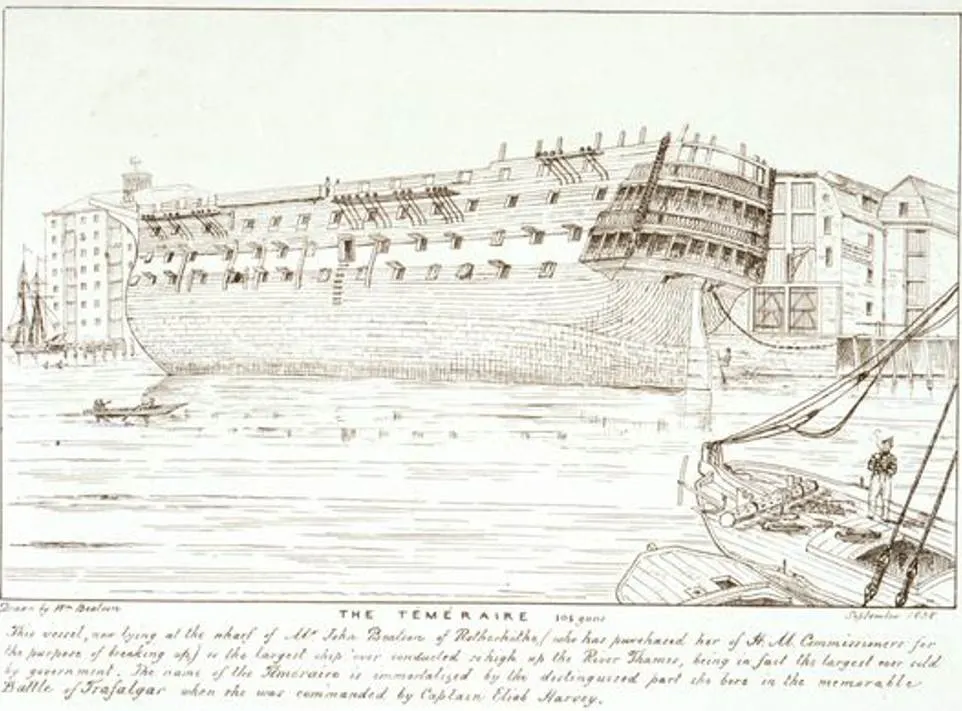
5. It was instantly a great success when it was exhibited and it still is
The painting was considered to be a masterpiece the moment it was exhibited at the Royal Academy in London in 1839. The content of the painting, an old warship being towed to its final resting place, certainly helped to classify it as such.
The painting was described by contemporary critics as:
A grand image of the last days of one of Britain’s bulwarks.
The sentiment about this remarkable work of art hasn’t changed in modern times. This is emphasized by the fact that it was voted the greatest painting in Britain back in 2005.
More recently, the Fighting Temeraire and the artist who created it were included on the new £20 note, quite an honor indeed.

6. Turner once refused a huge sum of money and held onto it until he died
contemporary and modern critics weren’t the only people who admired the painting. William Turner himself referred to The Fighting Temeraire as his ” Darling.”
The artist was an eccentric figure who lived in squalor during the final decades of his life, although he had accumulated a lot of wealth from selling his paintings.
No amount of money was going to convince him to let go of his previous work. He reportedly refused an offer of £5,000 and even a blank check where he could have written an astronomical amount.
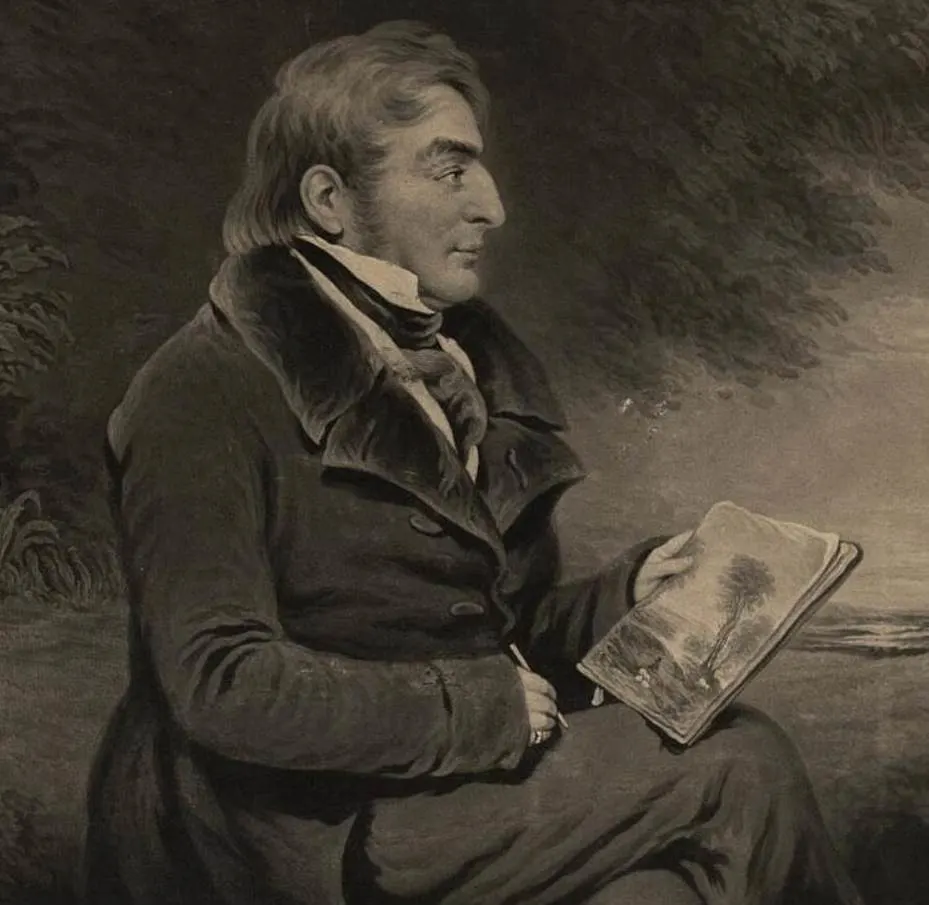
7. How big is The Fighting Temeraire by J.M.W. Turner
The painting isn’t one of the most celebrated works of art in the oeuvre of William Turner because it’s of a monumental scale. The content and quality of execution are what make this an amazing masterpiece.
This oil on canvas painting is medium-sized, is in extremely good condition, and has dimensions of 90.7 × 121.6 centimeters (35.7 × 47.9 inches).
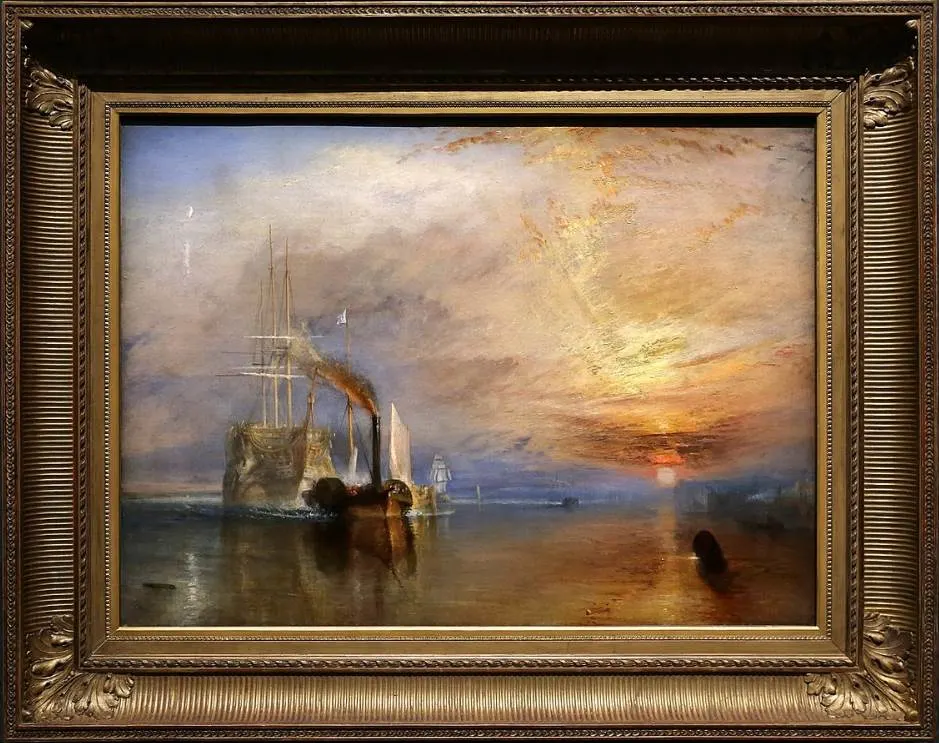
8. Where is the painting located today?
The painting never left Turner’s collection and he bequeathed it to the nation. His idea was to have an art gallery established with the money he left behind and display some of his works there.
His will wasn’t exactly clear and was contested by some of his relatives, so his plan was never fulfilled. The legal battle ended in 1856 when many of his paintings entered the collection of the National Gallery in London.
Many of his works were moved to a museum known today as Tate Britain when it was established in 1897 as the “National Gallery of British Art.”
The Fighting Temeraire never left the National Gallery and that’s where you can admire the painting today.

